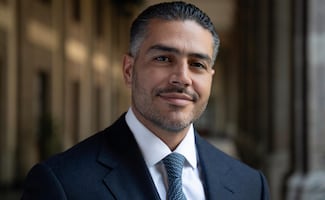Más Información

New York Times destaca rol de Harfuch en el combate del narco; resalta intercambio de inteligencia con EU

Marco Rubio destaca labor de seguridad de México; "están haciendo más que nunca en su historia", afirma

"Queremos cerrar este capítulo", dice Salinas Pliego al SAT; esperarán a enero a conocer fundamentos legales de adeudo fiscal
A year after a devastating earthquake struck Mexico City and killed hundreds of people, Guadalupe Padilla is still waiting to return to her home.
The 60-year-old security guard has lived in a wooden shack in a park facing the now-empty apartment block where she spent three decades of her life.
Padilla is one of hundreds of people in the capital who have been unable to return to their homes, according to Reuters interviews with over a dozen people left homeless by the quake.
In early September last year, an 8.1 earthquake struck Southern Mexico, killing about 100 people and toppling buildings. Twelve days later on Sept. 19 , the anniversary of a 1985 quake that claimed tens of thousands of lives in Mexico City, a 7.1 magnitude tremor shook the center of the country, killing about 370 people .
Fearing her apartment was unsafe after the second earthquake, Padilla fled and waited for the building to be repaired.
Many of the people interviewed by Reuters said they are still waiting for assistance promised by the government
. Others refuse to leave their homes, even if they are badly damaged, for fear they will be permanently displaced.
About three weeks ago, the building’s management told Padilla to remove the rest of her belongings, without providing information about what lay ahead, she said.
“It’s not fair for them to kick us out without explaining anything,” Padilla said.
Reuters was unable to locate the managers of the building.
President Enrique Peña Nieto
’s office on Tuesday said the government had provided aid to help rebuild 166,000 homes of more than 169,000 that were damaged, mostly in the south. The Interior Ministry did not immediately respond to a request for comment on those left homeless.
But 434 buildings in Mexico City are still at risk of collapse and over 1,000 require significant reinforcement before they can be reoccupied, the capital’s government said.
The dilemma can be felt acutely in Tlalpan , a neighborhood in the capital’s southern reaches hit hard by the quake.
In the sprawling housing complex known as Multifamiliar Tlalpan where Padilla once lived, one building collapsed, killing nine people , and the remaining towers were declared uninhabitable. Some 500 families lost their homes , according to Citizen watchdog group Mexicans Against Corruption and Impunity (MCCI) .
Padilla said the government has been more concerned with launching new development projects than looking after residents.
“After everything happened here, the construction mafia got started,” Padilla said, referring to a wave of construction firms that she said came after the quake to redevelop the site.
In a report published last week, MCCI said it found evidence of poor construction in the Tlalpan complex and other buildings that fell in the city.
In some cases, residents had complained of severe structural damage before the quakes, the group said.
Rather than heeding residents’ complaints, city authorities slashed budgets for the buildings and continued to liberally grant construction permits
, MCCI found.
City officials did not immediately respond to a request for comment about MCCI’s findings and have not publicly commented on the report since it was released.
Since the quake, other problems have taken root, such as a spate of burglaries . The thieves picked locks and broke down doors, prompting some people to reoccupy their homes, according to owners of the apartments and police officers who requested anonymity.
Although his brother reclaimed his apartment, Ignacio Melo has yet to return. He lives in a small wooden shack, hastily built near a park where he used to walk.
“We’ve already been to many authorities, but no one listens to us,” he said.
dm
Noticias según tus intereses
[Publicidad]
[Publicidad]













